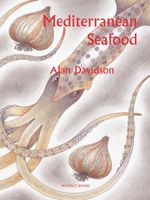Advertisement
The Order of Cod-like Fish
Appears in
Published 1981
The Order Gadiformes contains the important family Gadidae, the family of the cod, haddock, ling, saithe and whiting; and the family Merlucciidae, which includes the hake.
The cod itself is not found in the Mediterranean, except ashore in the guise of salt cod. The traffic in salt cod from Scandinavia to the warm countries of southern Europe has been important since the Middle Ages; and was supplemented in the sixteenth and seventeenth centuries by the establishment of cod fisheries off the northern Atlantic coast of America, especially in Newfoundland. In fact, there were two products: stockfish, which was simply wind-dried in places with a suitable climate, such as Norway and Iceland, or which might be wind-dried and lightly salted; and salt cod, which is first salted and then partially dried. The French, who had plenty of salt, were among the pioneers in using the latter method in Newfoundland, where it is anyway more appropriate because drying conditions are less good than in Scandinavia. Either kind of cured fish could be transported economically over long distances, because of the reduction in weight. (Stockfish is equivalent in nutritional value to five times its weight in fresh fish.) In Roman Catholic countries, where there were many meatless days in the year, and supplies of fresh fish were inadequate, these cured fish were in great demand. They still are. Tastes once acquired are often retained when the reason for acquiring them has disappeared. The French continue to eat salt cod as morue, while the Spaniards know it as bacalao. Italy imports both salt cod (baccalá) and dried cod (baccalá secco).

